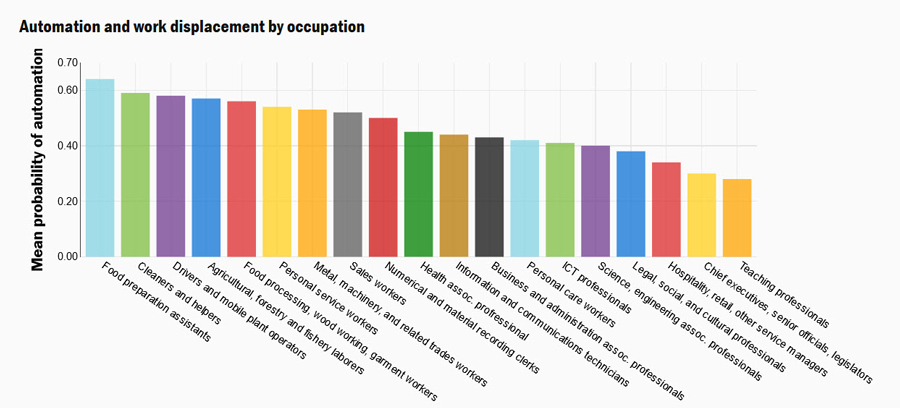By Chris Shelton

If anything, The Great Resignation is teaching us that finding and keeping “right-fit” talent is harder than we could have imagined. Hiring managers and recruiters find themselves negotiating a realm of developing benefits like flexible work arrangements, philanthropy and even mental well-being.
“There’s no one-size-fits-all when it comes to attracting talent,” says executive Angelia Pelham. “Every industry is struggling to find right-fit talent, and every industry is struggling to figure out how to retain this talent.”
And she should know: For more than three decades, Pelham has held upper-
management and vice president positions in manufacturing, human resources and sales at giants like PepsiCo Frito-Lay, Yum! Brands, CineMark Holdings and Dave & Buster’s. In addition, she is the Mayor Pro Tem of Frisco, Texas, and founder and CEO of the executive coaching and mentoring firm Real-Talk (www.real-talkcoaching4women.com). “I’ve been around when it comes to talent,” she says. “I cut my teeth on what it takes to attract and retain in any industry.”
At last November’s SEMA Show, Pelham presented “Proven Strategies to Recruit and Retain Top Talent,” a seminar designed to help employers build their talent game. In her presentation—now available as a SEMA Education on-demand video—she explained how best-in-class companies use flexibility, compensation, engagement initiatives, and cultural factors to make their organizations compelling places to work.
“The smaller the organization, the more critical it is for you to have right-fit talent,” she said. “When organizations like Disney and Pepsi lack talent in one area, chances are they can absorb that missing head count until they can fill the job. When you are in a smaller organization, every head counts. And when you have one person or two people that are missing, you feel it every day.”
Pelham recommended appealing to prospective employees with the single most important component to a company’s presence in the community: reputation.

According to Brookings Institution, routine-oriented jobs face the highest threat of automation, whereas those that require nuanced social interactions or analysis face lesser risk. This skill bias threatens jobs, but attentive employers will retain and retrain the workers who did them.
“Have you read or looked at Glassdoor reviews of your organization?” she asked. “Well, guess what. People are using the feedback from your employees to determine whether [they] want to attach themselves to your organization.” She said the following will go a long way to improving any brand’s reputation…
1. Hire and Promote Emotional Intelligence
Ask yourself if your business’ leaders are emotionally intelligent enough to develop and engage their teams. “People with high emotional intelligence have a good understanding of what their strengths and opportunities are. They’re able to read the room and see how their behavior is impacting other people. Great leaders are people who know how to get things done through other folks.”
2. Future-Proof Your Organization
“Are you thinking about the talent that you will need to be able to manage automation three to five years from now?” she asked. “Can your workforce survive another global crisis like a pandemic? How many of you have sat down with your teams and said, ‘if something like this happens again, this is what we can apply in the future?’
“Organizations that have taken time to ask what they learned from this pandemic have. What did we learn about our business and how do we ensure that we are prepared for the next wave of change?
“Who remembers A&P? Blockbuster? These companies were on the S&P 500, but no longer exist today. New ways of thinking drove many of these companies out of business. But what do you think happened there fundamentally? Intellectual complacency!
“We don’t spend enough time thinking around the corner, especially when it comes to talent,” Pelham asserted. “Automation is going to take over opportunities. How do you protect your people? The job may go away, but you don’t want to lose good people.”
3. Embrace Technology
The technology that threatens your employees’ wellbeing can also help. “Look at applicant-tracking systems,” Pelham urged. “They have them for all levels in an organization; there are small-business platforms that apply to yours.”
These digital assistants write job descriptions, attract talent, conduct video interviews, comb through analytics, and even onboard new hires. “All of that can be automated at the press of a button,” Pelham noted.
“Everybody has a screen now,” she added. “So [instead of] bringing people in for that first level of interview, do a video one.”
4. Preserve Institutional Knowledge
“Key people who do major things are going to be retiring in the next three to five years,” she warns. “And they’re taking their institutional knowledge with them.
“I’ve been in organizations where we allowed institutional knowledge to retire, and as soon as that person retires, we’re left trying to figure out how to fill the gap. What are you doing to make sure that you’re getting that institutional knowledge from them into the minds of the folks who are coming?
“You’re going to have a different workforce than we’ve seen in the past, and that workforce is going to be working to get up to speed with that institutional knowledge.
5. Recruit Now, Wait Later
“Organizations that win the talent war are going to be ones that recruit from trade schools, from colleges, and even from high schools,” Pelham observed. “They are building that talent pipeline. Get to know the principal of those schools. Talk to guidance counselors. If you don’t, and you anticipate having four or five jobs that somebody coming out of school would love, you are missing out on building your talent pipeline.
“Don’t just rely on future talent to decide what to do after they graduate. These things don’t necessarily have an immediate payoff; but long term, these will determine if you win this talent war.”
6. Regard Culture as a Value, Not a Place
“People tell me that their [work] culture has gone down the drain after COVID. They say that it’s because their people are geographically dispersed. So, culture is a place? Because that’s exactly what they’re saying: Because we’re not in the same four walls, we can’t have the same culture,” Pelham observed.
Pelham countered that it’s better to see culture as a value and an intentional mindset. In other words, “what are you doing to make sure that your people, regardless of where they’re located, feel as though they’re a part of your organization?” she asked.
“Think about what kind of culture you want to create so that you can be that magnet for that talent. Some organizations [are] very intentional about what kind of culture [they] want to create. They come up with the adjectives and then work their way backward to ensure that their organization is that kind of space. Organizations that are struggling to retain people, I guarantee you that they have not spent enough intentional time on the kind of culture they want to create.”
Successful organizations do it because culture has value. She referenced a study conducted by Fortune in which workers younger than 35 said they would sacrifice $7,600 annually to work at a job that provided a better culture. “That’s basically saying people will pay to work at a company that has a good culture,” she observed.
And it drives them to review sites like Glassdoor. “If this job [is] paying this amount and [that] job [is] paying roughly the same, what’s the difference? It’s going to be what people are saying about working in that culture [that matters].”
7. Model Inclusion and Affirm Your Workforce
“People want to work for companies with effective diversity and inclusion programs. Workers want to see people who look like them at every level in your organization,” advised Pelham.
“They also want feedback on their performance. The workforce that’s under 35 loves affirmation. They love to be told they’re doing a really good job. In many cases, they just want you to come pat them on the back and tell them, ‘You’re doing a great job, and I want you to know I see you.’ I see you. That simple phrase will change the culture in your organization,” she emphasized.
“You want your spouse to see you. You want your children to see you. It’s a natural human desire to be seen. This workforce wants to know what they’re doing is not in vain.”
8. Do Well by Doing Good
“Employees want to work for companies that have a family-friendly approach. They also want to work for organizations that do things in the community,” Pelham noted, adding that she recommends partnering with a nonprofit.
“Regardless of your industry, there are nonprofits out there that you can support by letting employees volunteer,” she said. “You’d be surprised at what that does for potential employees. If you told me that you’re going to give me two days and all I have to do is show you that I volunteered in the community? I’m going to take it. That may be the tie-breaker between you and another company. You need to be able to [tell] your employees that what they’re doing means a lot in society.”
9. Respect the Whole Person
According to Pelham, Glassdoor and MIT Business School studied 5,000 reviews of companies to determine what people expect from today’s workplace today. The number-one thing that employees mentioned was that they want to feel respected.
“Have you asked your employees what respect looks like?” she asked. “A predictor of the company’s culture was manager support. They had their manager’s attention; their manager had their back. Manager support was the second most important thing that was mentioned in this study: respect and manager support.”
In short, employees want to work for companies that care about their total well-being—their physical health along with their mental health.
“Do you have benefits that support mental health? Are you doing things that would reduce stress on your employees to show that you are concerned about their mental health? Total health and total wellbeing are critical for the future,” she asserted.
“What I’m talking about is not stuff that you have to go out and buy,” she added. “This is all free stuff; you could go back and start a whole revolution without spending a dime because respect doesn’t cost a thing. Manager support doesn’t cost a thing. This is stuff you could do today.”
10. Finally, Tell the World
“Your website is the one surefire way that you can tell consumers how you treat your employees—and you can tell potential employees what it’s like to work there,” explained Pelham.
“It could be a simple video where three or four of your employees say what it’s like to work there. Then put it on your website. [It] doesn’t have to be beautifully produced. People just want to know if [yours] is a company that they want to spend time with. Because you spend the bulk of your time with the people that you work with, you’re missing out on an opportunity if you don’t have a section of your website that’s dedicated to potential employees.”
Wrapping up her presentation, Pelham challenged her audience to ask themselves what they plan to do differently going forward. “How are you going to think about the workforce? Whether it’s through attraction, through technology, through creating a culture that has some of those pieces that we talked about, how are you going to ensure that you are prepared for this workforce shift [and] demographic that’s going to be hitting the workplace today?
“These are not just nice-to-haves,” she concluded. “These are going to be table stakes when employees are starting to make decisions about companies they want to work for.”
 View the Full Seminar
View the Full Seminar
You can view Angelia Pelham’s entire SEMA Education seminar, “Proven Strategies to Recruit and Retain Top Talent,” on-demand at www.learning.sema.org/proven-strategies-to-recruit-and-retain-top-talent.
In addition, be sure to check out the following education seminars on today’s trending business topics:
“Diversity and Inclusion: How You Can Advance Equal Opportunity in Your Workplace”
“Facing Failure Fearlessly: A Roadmap to Success”
